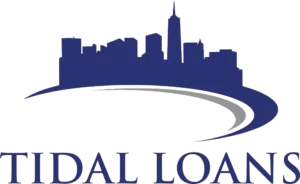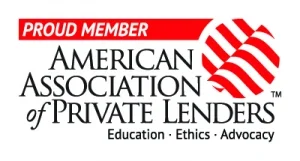A bridge loan is a short-term financing solution primarily designed to help homeowners purchase a new home before their existing one sells. This type of loan “bridges the gap” between the down payment requirement on the new home and the proceeds from the sale of your current property. Bridge loans can also be beneficial to businesses and individuals in other situations where temporary financing is needed.
Who Offers Bridge Loans
Finding the right bridge loan lender depends on your specific needs and financial situation. Here’s a detailed breakdown of the various types of lenders who offer these specialized loans:
Banks and Credit Unions:
Traditional banks and credit unions are a common starting point for many borrowers. If you have an existing banking relationship, you might benefit from competitive rates and personalized service. Banks generally have stricter qualification requirements, focusing heavily on your creditworthiness and existing debt obligations.
Online Lenders:
The rise of online lenders has brought increased convenience and potential for faster approval times in the bridge loan market. These lenders often streamline the application process with online platforms and may be more flexible if your credit history isn’t perfect. However, thoroughly research online lenders to ensure their reputation and reliability before applying.
Hard Money Lenders:
Hard money lenders are private lenders or investors who specialize in short-term, asset-based loans. They focus primarily on the value of the property you are using as collateral rather than your credit score. This can be beneficial if you have less-than-stellar credit but substantial equity in your home. Be aware that hard money loans typically come with higher interest rates and fees compared to traditional lenders.
Specialized Bridge Loan Companies:
Some companies focus solely on providing bridge financing solutions. These lenders offer in-depth expertise in bridge loans and may have tailored products to fit different borrower profiles and situations. They can be a valuable resource if you have complex financing needs or want to explore various bridge loan options.
Factors to Consider When Choosing a Lender
Selecting the right bridge loan lender involves more than just finding the lowest interest rate. It’s essential to consider several crucial factors to ensure you’re getting the best deal and a loan that aligns with your needs. Here’s what to keep in mind:
Interest Rates:
The interest rate is one of the most significant cost factors associated with a bridge loan. Rates can vary considerably between lenders, so compare multiple offers. Keep in mind that even small differences in interest rates can translate into substantial savings over the life of the loan.
Fees:
Lenders charge various fees in addition to interest. These may include closing costs, origination fees, appraisal fees, and administrative charges. Ask for a detailed breakdown of all associated fees to fully understand the true cost of the loan and to avoid any surprises.
Repayment Terms:
Bridge loans can have different repayment structures. Some lenders may require interest-only payments during the loan term, while others may require full principal and interest payments. Consider your cash flow and choose a repayment option that suits your financial situation. Additionally, be aware of loan term lengths, as these can influence overall cost and repayment flexibility.
Qualification Requirements:
Eligibility for bridge loans depends on factors like your credit score, debt-to-income ratio (DTI), and the amount of equity you have in your current home. Lenders will have varying qualification requirements, so understand the criteria upfront to find lenders you’re likely to qualify with.
Reputation and Customer Service:
Choose a lender with a positive reputation, demonstrated by strong customer reviews and a track record of successful loan transactions. A reliable lender with excellent customer service can make the borrowing experience smoother and ensure support throughout the process.
How to Apply for a Bridge Loan
The specific process for applying for a bridge loan may vary slightly between lenders, but here’s a general overview of the steps involved:
Prequalification:
Start by contacting potential lenders to discuss your situation and get prequalified. This initial step often involves providing basic information about your income, assets, debts, and the properties involved (your current home and the one you intend to purchase). The lender will use this information to estimate your potential loan eligibility and give you a preliminary idea of terms.
Application:
If you decide to proceed, you’ll submit a formal application with supporting documentation. This typically includes income verification (pay stubs, tax returns), asset verification (bank statements), a purchase agreement for the new home, and an appraisal report from a licensed appraiser on your current home.
Underwriting:
The lender will thoroughly review your application and conduct a detailed assessment of your financial profile. They’ll carefully evaluate your income, debts, credit history, and the appraised value of your current home to determine your loan eligibility, interest rate, and maximum loan amount.
Closing:
If your loan is approved, you’ll move to the closing stage. You’ll review and sign the loan documents, pay any required closing costs, and then the lender will disburse the funds. The timeframe for closing can vary depending on the lender and the complexity of your transaction.
Alternatives to Bridge Loans
While bridge loans can be a valuable tool in certain situations, they might not be the ideal solution for everyone. If you’re unsure whether a bridge loan is right for you, consider these potential alternatives:
Home Equity Line of Credit (HELOC):
A HELOC functions as a revolving line of credit secured by the equity in your current home. It provides flexibility, allowing you to withdraw funds as needed and only pay interest on the amount you actually use. HELOCs often have lower interest rates than bridge loans, making them a more affordable option for some borrowers.
Cash-out Refinance:
With a cash-out refinance, you replace your existing mortgage with a larger one, taking the difference between the two loan amounts as cash. This can be a viable strategy if you can secure a new mortgage with a lower interest rate than your current one and have enough equity in your home.
Personal Loan:
For smaller funding needs, an unsecured personal loan might be an option. However, interest rates for personal loans tend to be higher than secured options like bridge loans or HELOCs. Personal loans are best suited when you only need to bridge a small financial gap for a very brief period.
Other Options:
Depending on your specific circumstances, you might consider other less common alternatives. These could include borrowing from a retirement account, seeking a loan from family or friends, or negotiating an extended closing period with the seller of your new home.
Conclusion
Bridge loans offer a convenient solution when the timing of buying and selling a home creates a financial hurdle. By understanding the types of lenders, factors to consider, and the application process, you can find the best bridge loan option to achieve your homeownership goals.


